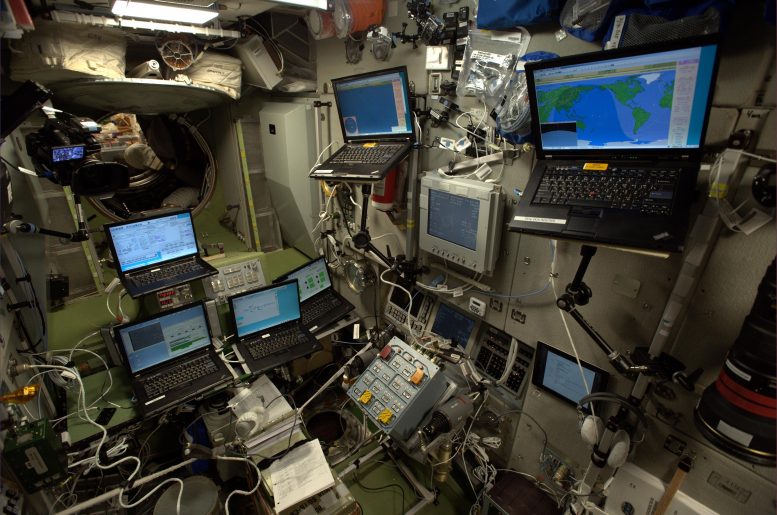
The setup in the Russian Zvezda module on the International Space Station shortly before the docking of Europe’s Automated Transfer Vehicle Georges Lemaître (ATV-5). Credit: ESA/NASA
The Space Station has grown to the size of a football field and space agencies are looking to extend its lifetime until 2030. European-built computers have quietly been keeping this orbital outpost on track and in the right position, running in the background since 2000.
The Data Management System (DMS) computers in the Russian Zvezda module were built over 20 years ago by what is now Airbus. Two fault-tolerant computers collect data and provide navigation, communications, and operations for the Russian segment.
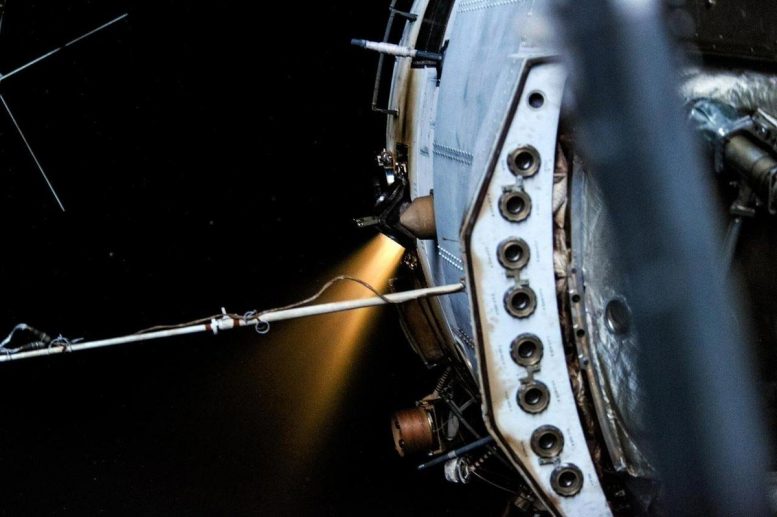
Zvezda burning its engines to adjust the Space Station’s orbit. The International Space Station adjusted its orbit to create the right conditions to welcome Luca’s Soyuz and the cargo vehicle and later this month the Progress MS-12 supply spacecraft. Credit: ESA
These are required for International Space Station operations, and a sudden breakdown could lead to catastrophic consequences. To ensure continuity three units work in parallel with two active and one standby to take over if one fails. A fourth computer is kept as spare that is used as soon as one of the computers in active duty has problems.
Mission-critical upgrade
More fault-tolerant computers were built for a Russian module soon to be launched to the International Space Station, the Multipurpose Laboratory Module. The new computers exhausted the spare parts kept aside for ground repairs and the production of new computers.
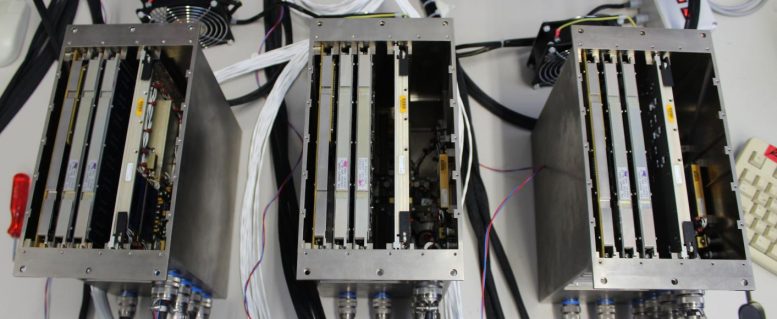
Data Management System (DMS) Computers. Credit: ESA
After years of operations, engineers noticed that most of the failures on the ground and on-orbit computers occurred in memory modules on one of the printed circuit boards of the computers. Each time, a failed computer was removed, returned to the ground for repairs and then re-launched, with a long turn-around and impact on logistics. In addition, it soon became clear that this approach was not sustainable due to the lack of parts.
Following extensive technical discussions and testing on Earth, engineers proved that a new printed circuit board, with the same form and function but built using modern and available components, could be the solution.
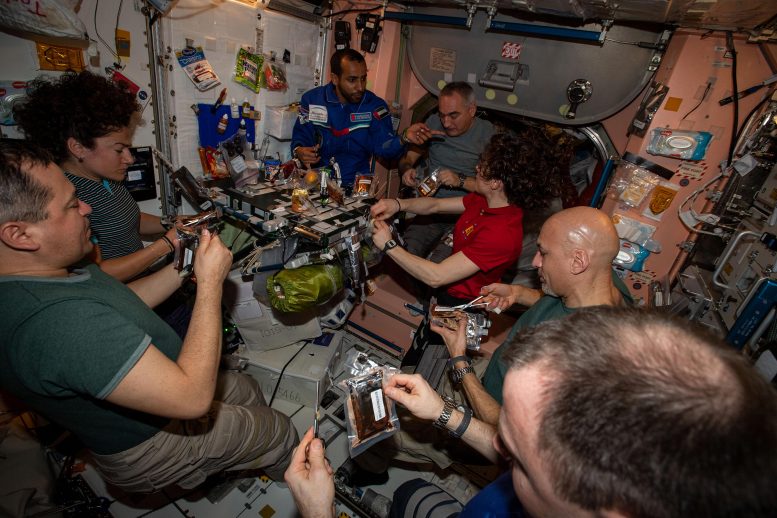
When Earth is so far away, it helps to have friends nearby. The usual six-astronaut crew of the International Space Station welcomed three more and a cargo vehicle in September 2019, making for a full house on the orbital outpost. This image was taken of the team gathered for a celebratory dinner in the Russian Zvezda module, the food preparation area of the Space Station. Credit: NASA
Teams in Russia and Europe considered upgrading the computer boards directly by an astronaut on the Space Station in weightlessness – the equivalent of open-heart surgery on Earth! This was no easy task to demonstrate, considering the computers were not designed for maintenance on orbit and the units were closed with small screws, sometimes even glued in place.
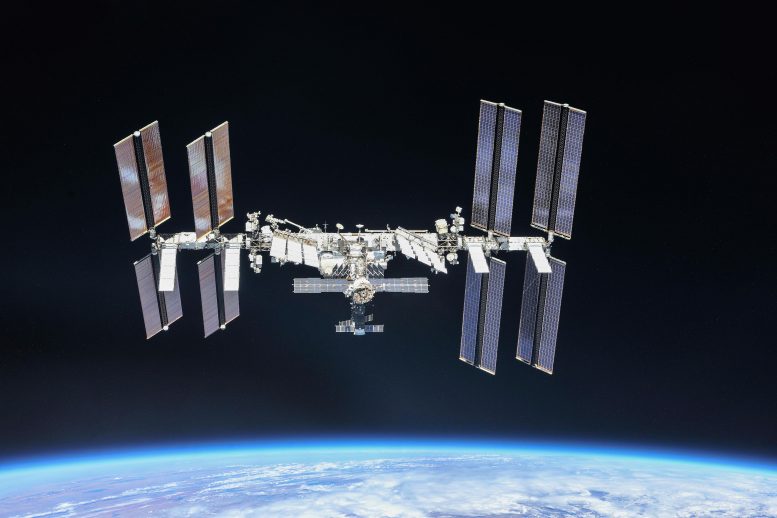
The International Space Station photographed by Expedition 56 crew members from a Soyuz spacecraft after undocking. NASA astronauts Andrew Feustel and Ricky Arnold and Roscosmos cosmonaut Oleg Artemyev flew around of the orbiting laboratory to take pictures of the station before returning home after spending 197 days in space. The Station celebrated the 20th anniversary of the launch of the first element Zarya in November 2018. Credit: Roscosmos/NASA
Much like preparing for a spacewalk, engineers and Russian cosmonauts practiced and demonstrated the process on Earth to ensure the operations were feasible and could be performed in space without risk.
Convinced that this approach would work new computer boards were ordered in 2015 and sent to the Space Station in 2018.
Space transplant
Waiting for the new mainboards to reach the Space Station, a failed computer was kept on-orbit. When the new parts and trained astronauts arrived teams decided to use a failed unit as a test case.
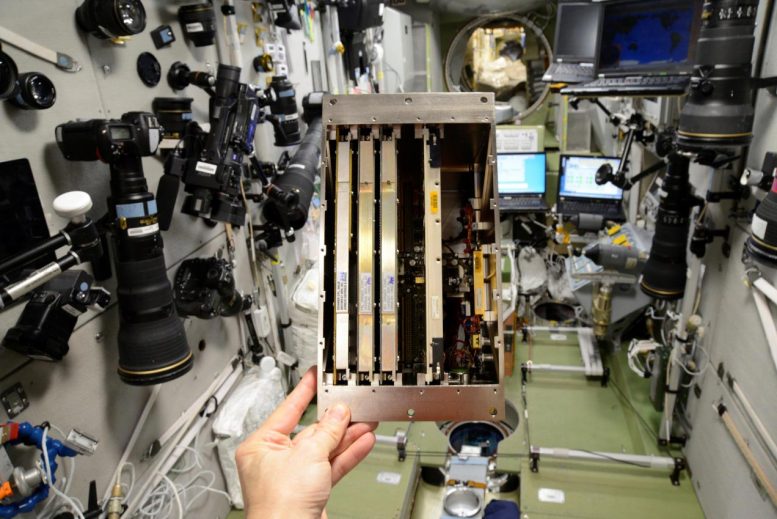
The Data Management System (DMS) computers in the Russian Zvezda module were built over 20 years ago by what is now Airbus. Two fault-tolerant computers collect data and provide navigation, communications and operations for the Russian segment. Credit: Roscosmos
In January 2019 the older board was replaced with the new stock. At that time cosmonauts confirmed that the computer had survived the operation but were not yet certain that it was fully fit. Crew time in space is scarce and the teams planned to wait for the next failure before installing the computer that had undergone a heart transplant and fully check it. Last month one of the old computers had problems and so it was removed and replaced with the new unit.
All is now confirmed to be working properly, with great satisfaction to the personnel at RSC-Energia, Airbus and ESA. This solution requires less costly transport to Earth orbit as only the boards need to be swapped instead of the whole units – the repair time is now reduced from six months to a few days.
Future missions
This kind of behind-the-scenes work is the type that does not get much attention unless something goes wrong, but the new approach is needed as humans explore farther into our Solar System, starting on the Gateway, where supplies from Earth are not readily available.
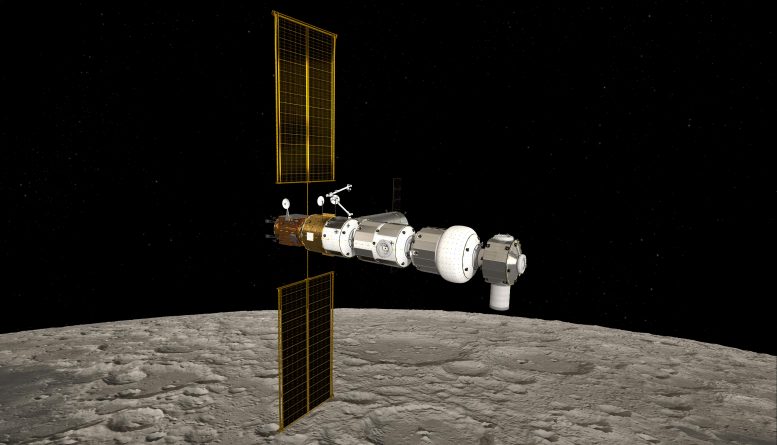
Artist’s impression of the Gateway over the Moon. The Gateway is the next structure to be launched by the partners of the International Space Station. Credit:
ESA/NASA/ATG Medialab
Maintenance on the International Space Station demonstrates the experience and design knowledge needed to support future missions while ensuring more sustainable operations – a win-win situation.


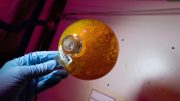
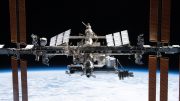
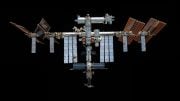
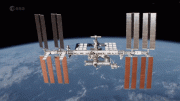


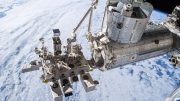
I assume that this computer is a “triple modular redundant” design where two computers really do the work with a third checking the other two? We worked on these kinds of systems at Tandem Computers Inc. where I worked as an analyst for years.
kiro” oleh sawangan opo wae nek kono apo enek seng iso pok kabarne kambi aku iki nek iso tulung kabarne sak cepete yho tak enteni wiwit sore iki yen ono seng okeh mesisan lek ngabarno mbi awak..ku yhowes matursuwon